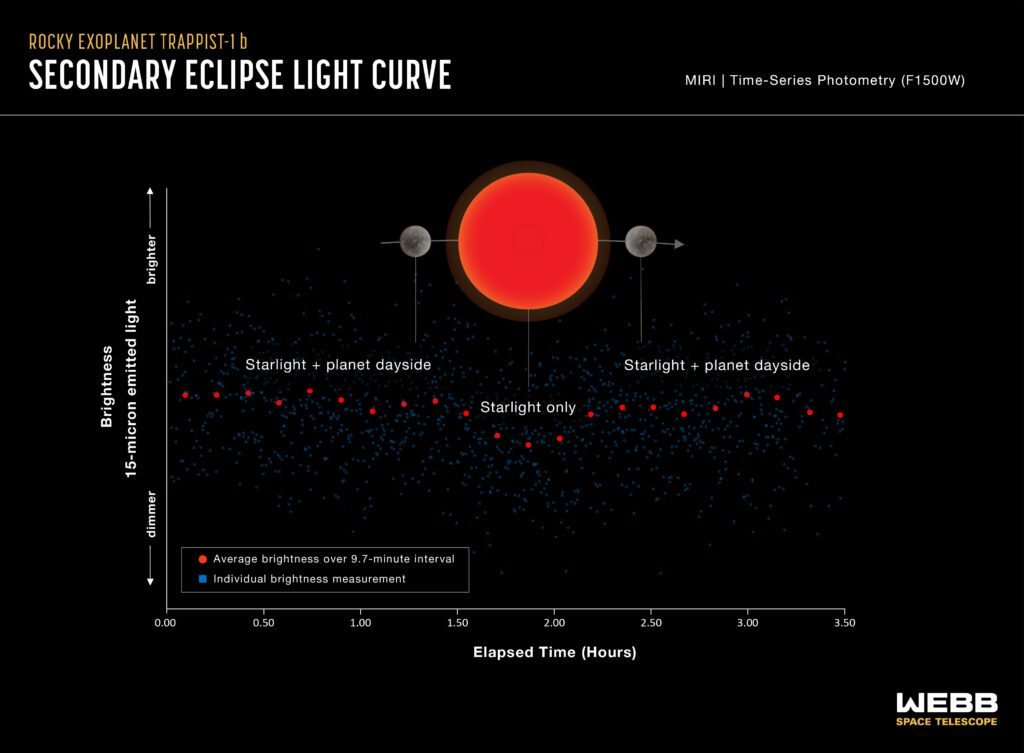For the first time, James Webb Space Telescope (JWST) measures the temperature of an exoplanet of star system TRAPPIST-1, and it’s 230ºC (446ºF).
Click on the following links to know more about James Webb.
Information about James WebbClick here
The TRAPPIST-1 system
Source: Universe Magazine
The red dwarf TRAPPIST-1 is located at a distance of 41 light years from the Sun. By stellar standards, this is a very small and cold luminary. Its radius is only slightly larger than the radius of Jupiter, its mass is 9% of the mass of the Sun, and the surface temperature is 2,300 °C.
In 2016-2017, astronomers discovered seven rocky exoplanets in the TRAPPIST–1 system at once. From the point of view of their location, they are characterized by a very dense “packing”. The orbits of the first and seventh planets are separated by a distance of only 6 million km. For comparison, in the Solar System, this figure is 2.8 billion km.
But the most interesting thing about TRAPPIST-1 is that the orbits of three of its worlds at once lie in the so-called habitable zone. They receive enough energy from their star so that, if there are suitable atmospheric conditions, liquid water can exist on their surface. All this makes the TRAPPIST-1 system an extremely attractive object for research. It is not surprising that it has become one of the primary goals for JWST.
Hot world without atmosphere
The purpose of the first JWST observations was the inner exoplanet TRAPPIST-1b. In size and mass, it is slightly larger than Earth, its orbit passes at a distance of 1.7 million km from the parent star.

JWST focused on measuring the energy released by an exoplanet in the form of infrared radiation. For this, astronomers used a method called secondary eclipse photometry. JWST measured the change in the brightness of the system as TRAPPIST-1b passed behind its star. Due to the high sensitivity of its instruments, which far exceeds the indicators of its predecessors, the space observatory could calculate exactly how much infrared light the daylight side of the Trappist-1 b emits. The analysis shows that this indicator corresponds to an average surface temperature of 230°C.
In addition, astronomers managed to exclude the presence of a dense atmosphere in TRAPPIST-1 b. The fact is that the exoplanet is constantly facing its star with the same side. If it had an atmosphere, it would redistribute heat and the daytime side would be a little colder.
This phenomenon is called tidal locking, I already written a post about the subject.
However, JWST failed to identify any signs of such a process. Analysis of the results of five separate observations suggests that the TRAPPIST-1 b radiation almost perfectly corresponds to an absolutely black body consisting of bare rock and devoid of atmosphere. In addition, no signs of light absorption by carbon dioxide have been detected, which also indicates that the exoplanet does not have a significant atmosphere.



